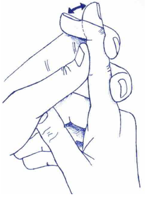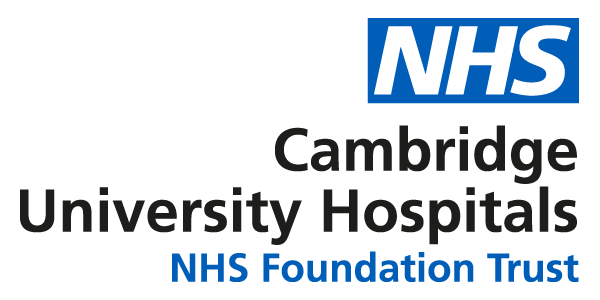Who is the leaflet is for? What is its aim?
This leaflet is designed to give general advice and information about rehabilitation following tendon tenolysis surgery in the hand or wrist. This includes expected recovery time, hand therapy advice and exercises following surgery.

What is tendon tenolysis surgery?
After a finger tendon repair or fracture, scar tissue can create adhesions. An adhesion happens when scar tissue forms and binds tendons to surrounding tissue potentially limiting movement and function of the hand. Tenolysis is surgery to release a tendon that is affected by adhesions.
What does hand therapy after tenolysis surgery involve?
While surgery aims to improve either the straightness or bend of your affected finger, hand therapy aims to maximise the benefits of surgery and help you regain functional use of your hand.
The amount of therapy required will depend on how difficult you find bending and straightening the fingers and regaining normal hand use. In the early stages of your recovery you may require regular input from your therapist, but as you heal and your finger movement improves, therapy input can be reduced. To maximise your recovery it is important to follow your therapist’s advice.
Splint
Some patients require a moulded thermoplastic splint to maximise the straightness of the finger(s). Your therapist will make this splint for you if it is needed and will advise you when to wear it.
Scar management
Initially scars can be firm, thick and red (active phase) but over time they soften and become pale (matured). This whole process may take 12 to 18 months or more.
During the active phase you can use treatments to influence your scar. When scar tissue first forms it is firm and tacky and can stick to structures around it. Scar care helps to flatten it and make it softer and reduces the chance of scar tissue sticking to the tissues around it (adhesions). Scar massage can be one of the most effective treatments to reduce scar tissue build up. The following section explains the technique.
Manual scar massage
When can I start?
24 to 48 hours after your stitches have been removed, if the wound is dry.
If you have dissolvable stitches, you can start massaging your scar at approximately 12 to 14 days after your surgery, provided the wound is healed and dry.
What do I need?
You will need a basic, un-perfumed moisturising cream. Aqueous cream or ‘E45 cream’, for example are ideal for massaging the scars.
Method
The scar massage needs to be in circular movements, on and around the scar line, to keep the skin moving freely. In the first few days you may only tolerate gentle massage, but you should then aim to increase it to a deep and firm massage to reduce the risk of adhesions. (See the picture below).
Your therapist will advise you as to how long you should continue with your massage.

Exercises
Which tendon(s) you have had released will determine which exercises are best for you to complete. Your therapist will advise you which exercises to start with and how to grade them over the weeks after surgery.
Generally, exercises are started gently to begin with, especially if you have had a tendon repair in the past, to minimise the risk of re-damaging the tendon. Little and often is a simple rule to follow in the first few weeks post-surgery.
It is vital that you attend all therapy appointments. If you do not carry out your exercise programme or attend all your therapy appointments you will not get the best results, and this may result in limitations in the movement and function of your hand.
You will find a few simple finger exercises below that can be started immediately after surgery. They should be completed slowly and gently. Do not expect to gain full movement straight away. It should improve with regular exercise and time as swelling and pain post-surgery settles.
Start with 5 repetitions of each exercise below, holding the end position for 3 seconds, 4-5 times per day.







Possible complications following surgery
Wound infection
If you suspect an infection it is important to contact your GP straight away. Signs of infection might include:
- redness
- an increase in swelling
- a change in pain
- discoloured discharge from a wound
- you may require antibiotics to treat the infection.
Swelling
It is normal to have some swelling present after surgery. This may remain in the hand or fingers for weeks to months. Swelling can change throughout the day. It is important to discuss any concerns you may have with your therapist, who will be able to advise you about the best course of action.
Pain
It is normal to experience some pain after surgery. Each individual’s experience of pain is very different. The use of over-the-counter pain relief, following the manufacturer’s instructions, can help relieve your pain. If your whole hand is very painful and swollen post-surgery, it is advisable to contact your GP, therapist or consultant for advice.
What will be my recovery time frame following surgery?
Wound healing can take 2-3 weeks depending on the extent of the surgery. Most patients start to use their hands normally at around 10-21 days after surgery, once the sutures have come out and the wound has healed. At this stage, it is a good idea to start scar management and increase your exercises as well as the functional use of your hands. Your therapist can advise you on this.
When can I drive?
This depends on the extent of the wound and the operation. Typically individuals return to driving approximately 2 weeks after surgery, usually when the wound is healed, the sutures have been removed and they can hold a steering wheel.
When can I wash my hand?
You can begin to wash the hand once the wound is fully closed or healed. Initially it is advisable to wash it under running water rather than soaking it in water to avoid the risk of infection.
When can I return to work?
Returning to work will depend on the demands of your profession and the healing of your hand. In general, light manual jobs (such as office work) can usually be resumed within 1-3 weeks, and heavier manual work after at 4-8 weeks. It is advisable to return to light duties initially.
Further information
Your therapist will check your progress regularly and will adjust your therapy programme if necessary.
If you require further information, please contact your hand therapist on 01223 216769.
We are smoke-free
Smoking is not allowed anywhere on the hospital campus. For advice and support in quitting, contact your GP or the free NHS stop smoking helpline on 0800 169 0 169.
Other formats
Help accessing this information in other formats is available. To find out more about the services we provide, please visit our patient information help page (see link below) or telephone 01223 256998. www.cuh.nhs.uk/contact-us/accessible-information/
Contact us
Cambridge University Hospitals
NHS Foundation Trust
Hills Road, Cambridge
CB2 0QQ
Telephone +44 (0)1223 245151
https://www.cuh.nhs.uk/contact-us/contact-enquiries/

